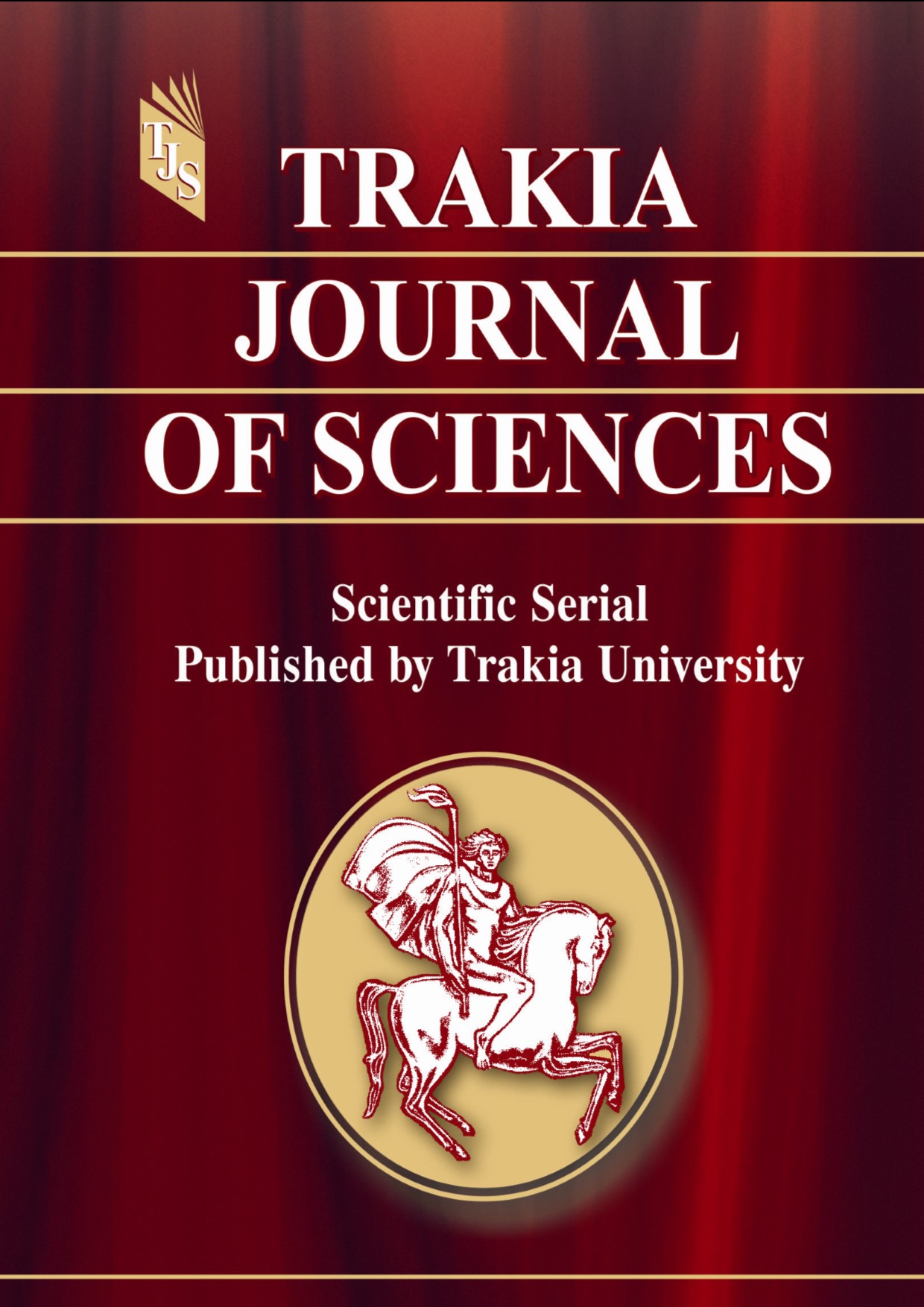THE ROLE OF FRESH AND CANNED FRUITS AND VEGETABLES IN BODY WEIGHT REGULATION
DOI:
https://doi.org/10.15547/tjs.2025.s.01.015Keywords:
nutrition, diet quality, plant-based foods, dietary patterns, obesity prevention, anthropometry, SPSS analysis, public healthAbstract
Purpose: Healthy eating plays a key role in maintaining a healthy body weight. Fruits and vegetables are essential components of the diet due to their nutritional benefits. Research on the impact of the frequency of consumption of fresh and canned fruits and vegetables on body mass index (BMI) and body weight is limited. This study aims to investigate this relationship.
Methods: The study included 533 participants aged 18 to 65 with varying frequencies of fruit and vegetable consumption. Data were analyzed using SPSS, with BMI classified into three categories: underweight, normal weight, and overweight.
Results: Among those who rarely consume fresh fruits, 30.5% are underweight, 45.8% have normal weight, and 23.7% are overweight. For those consuming fresh fruits once a week, 42.9% are underweight, 35.7% have normal weight, and 21.4% are overweight. For those consuming fresh fruits 2-3 times a week, 45.9% are underweight, 37.7% have normal weight, and 16.4% are overweight. For daily consumption, 57.7% are underweight, 27.3% have normal weight, and 15% are overweight.
Among those consuming fresh vegetables once a week, 33.3% have normal weight, and 18.5% are overweight. For those consuming fresh vegetables 2-3 times a week, 33.7% have a normal weight, and 15.4% are overweight. For daily consumption, 35.7% have normal weight, and 15% are overweight.
Conclusion: Daily consumption of fresh fruits and vegetables is associated with healthier body weight. Canned fruits should be consumed rarely, and canned vegetables 2-3 times a week.
References
World Health Organization, Obesity and overweight. Fact sheet. Geneva: WHO, 2023.
Ng, M., Fleming, T., Robinson, M., et al., Global, regional, and national prevalence of overweight and obesity in children and adults during 1980–2013: A systematic analysis. Lancet, 384:766–781, 2014.
World Health Organization, Global strategy on diet, physical activity and health. Geneva: WHO, 2021.
Schwingshackl, L. and Hoffmann, G., Diet quality as assessed by the Healthy Eating Index, the Alternate Healthy Eating Index, the Dietary Approaches to Stop Hypertension score, and health outcomes: a systematic review and meta-analysis. Am J Clin Nutr, 102:1007–1030, 2015.
Slavin, J.L. and Lloyd, B., Health benefits of fruits and vegetables. Adv Nutr, 3:506–516, 2012.
Boeing, H., Bechthold, A., Bub, A., et al., Critical review: vegetables and fruit in the prevention of chronic diseases. Eur J Nutr, 51:637–663, 2012.
Lock, K., Pomerleau, J., Causer, L., et al., The global burden of disease attributable to low consumption of fruit and vegetables: implications for the global strategy on diet. Bull World Health Organ, 83:100–108, 2005.
Aune, D., Giovannucci, E., Boffetta, P., et al., Fruit and vegetable intake and the risk of cardiovascular disease, total cancer and all-cause mortality—a systematic review and dose-response meta-analysis of prospective studies. Int J Epidemiol, 46:1029–1056, 2017.
Rolls, B.J., Ello-Martin, J.A. and Tohill, B.C., What can intervention studies tell us about the relationship between fruit and vegetable consumption and weight management? Nutr Rev, 62:1–17, 2004.
Ledikwe, J.H., Blanck, H.M., Kettel Khan, L., et al., Dietary energy density is associated with energy intake and weight status in US adults. Am J Clin Nutr, 83:1362–1368, 2006.
Rickman, J.C., Barrett, D.M. and Bruhn, C.M., Nutritional comparison of fresh, frozen and canned fruits and vegetables. Part 1. Vitamins C and B and phenolic compounds. J Sci Food Agric, 87:930–944, 2007.
Rickman, J.C., Barrett, D.M. and Bruhn, C.M., Nutritional comparison of fresh, frozen and canned fruits and vegetables. Part 2. Vitamin A and carotenoids, vitamin E, minerals and fiber. J Sci Food Agric, 87:1185–1196, 2007.
WHO Expert Committee, Physical status: the use and interpretation of anthropometry. WHO Technical Report Series, No. 854. Geneva: WHO, 1995.
World Health Organization, BMI classification. Geneva: WHO, 2006.
Tohill, B.C., Seymour, J., Serdula, M., et al., What epidemiologic studies tell us about the relationship between fruit and vegetable consumption and body weight. Nutr Rev, 62:365–374, 2004.
Vergnaud, A.C., Norat, T., Romaguera, D., et al., Fruit and vegetable consumption and prospective weight change in participants of the EPIC-PANACEA study. Am J Clin Nutr, 95:184–193, 2012.
Field, A.E., Willett, W.C., Lissner, L. and Colditz, G.A., Dietary fat and weight gain among women in the Nurses' Health Study. Obesity, 15:967–976, 2007.
Ledoux, T.A., Hingle, M.D. and Baranowski, T., Relationship of fruit and vegetable intake with adiposity: a systematic review. Obes Rev, 12:e143–e150, 2011.
Rolls, B.J., The relationship between dietary energy density and energy intake. Physiol Behav, 97:609–615, 2009.
Papanikolaou, Y. and Fulgoni, V.L., Association between canned fruit consumption and nutrient intake, diet quality, and health markers in US adults: NHANES 2011–2014. Nutrients, 12:1780, 2020.
Alinia, S., Hels, O. and Tetens, I., The potential role of fruit and vegetables in body weight regulation: a review of the evidence. Obes Rev, 10:639–647, 2009.
Neuhouser, M.L., Dietary flavonoids and cancer risk: evidence from human population studies. Nutr Cancer, 50:1–7, 2004.
Nielsen, S.J. and Popkin, B.M., Patterns and trends in food portion sizes, 1977–1998. JAMA, 289:450–453, 2003.
Monteiro, C.A., Moubarac, J.C., Cannon, G., Ng, S.W. and Popkin, B.M., Ultra-processed products are becoming dominant in the global food system. Obes Rev, 14(S2):21–28, 2013.
Drewnowski, A., Rehm, C.D., Martinez Steele, E., et al., The nutrient-rich foods index 2020: modeling nutrient density using the food and nutrient database for dietary studies. J Nutr, 151:90–98, 2021.
Lichtenstein, A.H., Appel, L.J., Brands, M., et al., Diet and lifestyle recommendations revision 2006: A scientific statement from the American Heart Association. Circulation, 114:82–96, 2006.
Darmon, N. and Drewnowski, A., Does social class predict diet quality? Am J Clin Nutr, 87:1107–1117, 2008.

Downloads
Published
Issue
Section
License

This work is licensed under a Creative Commons Attribution-NonCommercial 4.0 International License.


